Complete Solutions to Exercises (Linked Comprehension Type) of chapter ALKYNES of Class 11 book with complete answers and questions
| Class 11 | CHEMISTRY |
| Chapter | ALKYNES |
| CENGAGE CHEMISTRY | Exercises (Linked Comprehension Type) |
| Number Of Questions | 51 |
| Academic Year | 2023-24 |
In the following sequence of reactions, products A, B, C, D, and E are formed:
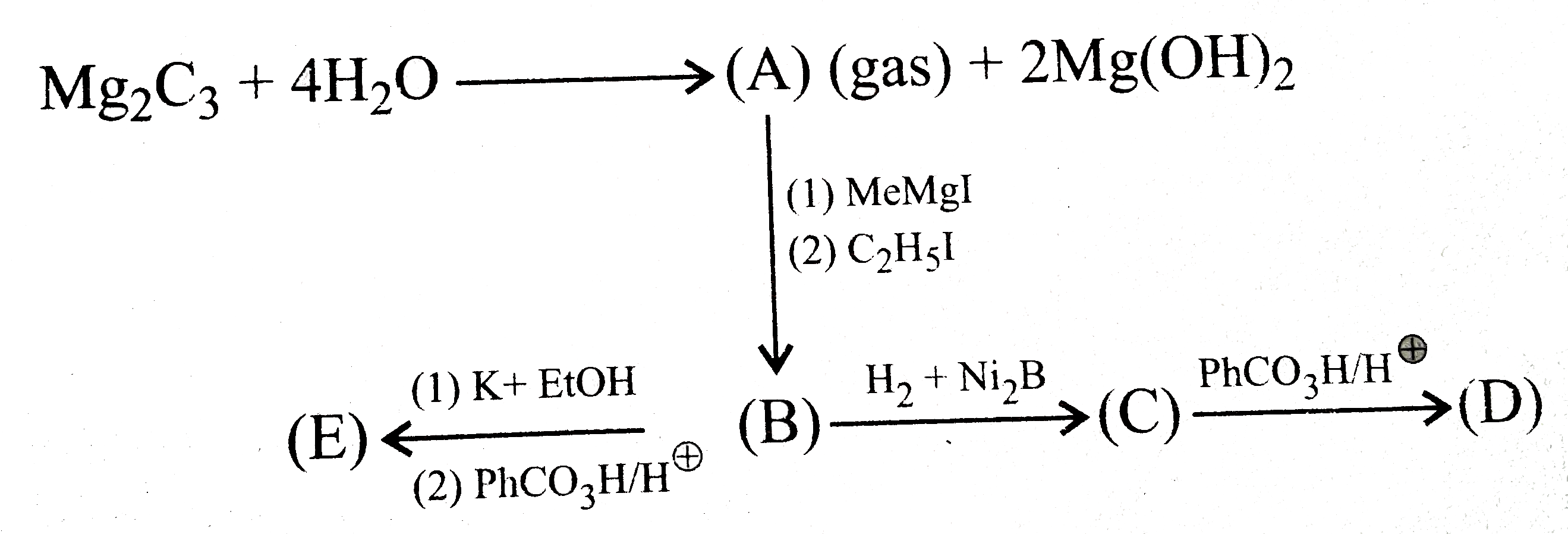
The structure of product (A) is:03:24View SolutionIn the following sequence of reactions, products A, B, C, D, and E are formed:

The structure of product (B) is:07:02View SolutionIn the following sequence of reactions, products A, B, C, D, and E are formed:

The structure of product (C) is:03:54View SolutionIn the following sequence of reactions, products A, B, C, D, and E are formed:

The structure of product (D) is:04:16View SolutionIn the following sequence of reactions, products A, B, C, D, and E are formed:
 05:15View Solution
05:15View SolutionIn the following sequence of reactions, products A, B, C, D, and E are formed:
 05:15View Solution
05:15View SolutionIn the following sequence of reactions, products A, B, C, D, and E are formed:

The structure of product (C) is:04:15View SolutionIn the following sequence of reactions, products A, B, C, D, and E are formed:

The structure of product (D) is:04:31View SolutionIn the following reaction sequence, products (A) to (G) are formed.
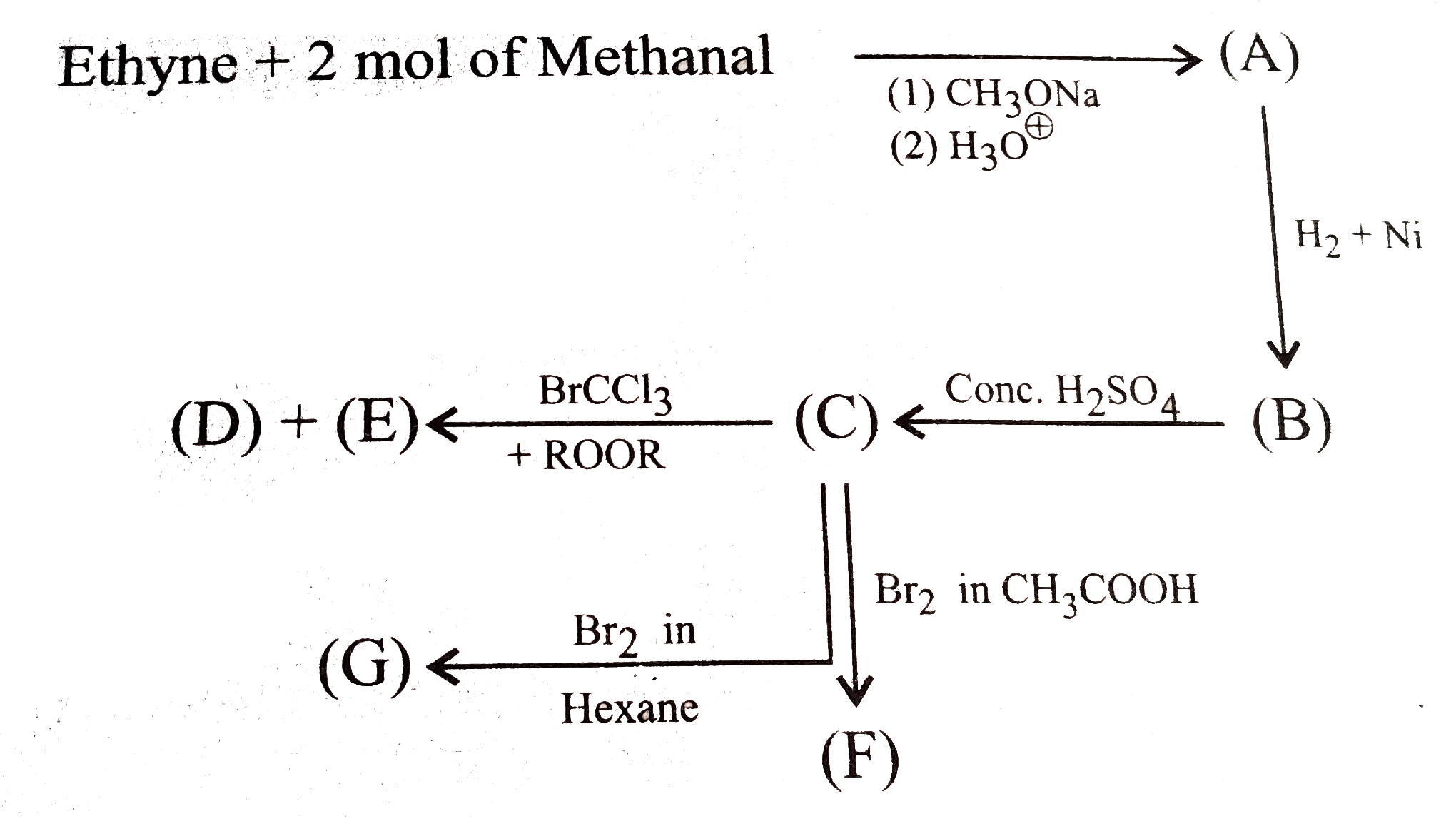
Product (A) is:04:49View SolutionIn the following reaction sequence, products (A) to (G) are formed.

Product (B) is:04:11View SolutionIn the following reaction sequence, products (A) to (G) are formed.

Product (C) is:03:43View SolutionIn the following reaction sequence, products (A) to (G) are formed.

Product (D) and (E) is:04:40View SolutionIn the following reaction sequence, products (A) to (G) are formed.

Product (F) is:04:15View SolutionIn the following reaction sequence, products (A) to (G) are formed.

Product (G) is:04:19View SolutionIn the following sequence of reactions, products (A) to (H) are formed:

The gases (B), (C), and (D), respectively, are:03:55View SolutionIn the following sequence of reactions, products (A) to (H) are formed:

The gases (B), (C), and (D), respectively, are:04:18View SolutionIn the following sequence of reactions, products (A) to (H) are formed:

The gases (B), (C), and (D), respectively, are:03:55View SolutionIn the following sequence of reactions, products (A) to (H) are formed:

The gases (B), (C), and (D), respectively, are:06:48View SolutionInsulin contains 3.2 % sulphur. The minimum molecular weight of insulin is
01:29View SolutionIn the following sequence of reactions, products (A) to (H) are formed:

The gases (B), (C), and (D), respectively, are:06:48View SolutionIn the following sequence of reactions, products (A) to (H) are formed:
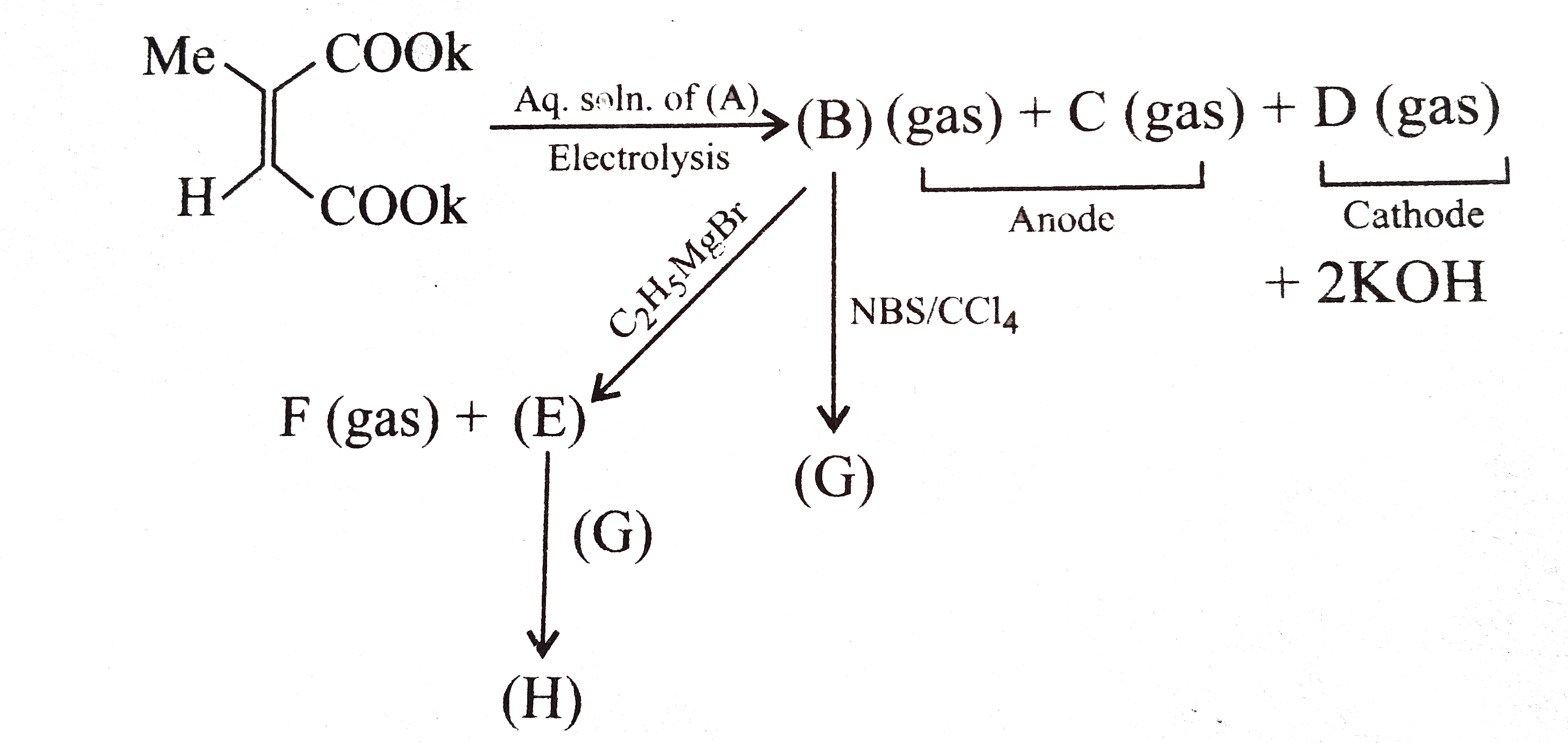
The volume of gases obtained at the anode at STP (1 bar and 298 K) when 2 faraday of electricity is passed is:04:18View SolutionIn the following sequence of reactions, products (A) to (H) are formed:

The volume of gases obtained at the anode at STP (1 bar and 298 K) when 2 faraday of electricity is passed is:04:18View Solutioni. (A), a compound with lowest number of C atoms, is unsaturated hydrocarbon and is optically active.
ii. (B), a compound with lowest number of C atoms, is unsaturated hydrocarbon and shows diastereomerism.
iii. (C), a compound with lowest number of C atoms and unsaturated hydrocarbon, shows both optical and geometrical isomerism.
Following is the reaction sequence of A, B, and C.
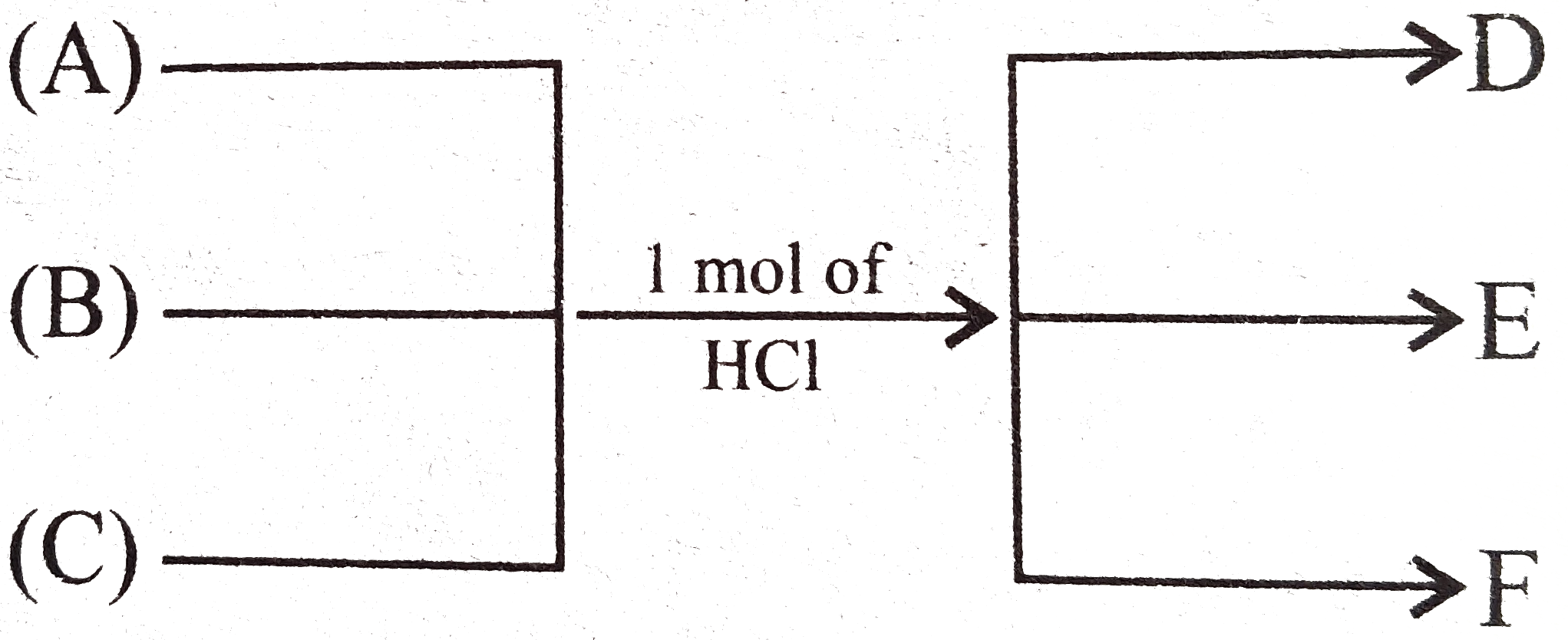
The structure of compound (A) is:01:51View Solutioni. (A), a compound with lowest number of C atoms, is unsaturated hydrocarbon and is optically active.
ii. (B), a compound with lowest number of C atoms, is unsaturated hydrocarbon and shows diastereomerism.
iii. (C), a compound with lowest number of C atoms and unsaturated hydrocarbon, shows both optical and geometrical isomerism.
Following is the reaction sequence of A, B, and C.

The structure of compound (B) is:02:08View Solutioni. (A), a compound with lowest number of C atoms, is unsaturated hydrocarbon and is optically active.
ii. (B), a compound with lowest number of C atoms, is unsaturated hydrocarbon and shows diastereomerism.
iii. (C), a compound with lowest number of C atoms and unsaturated hydrocarbon, shows both optical and geometrical isomerism.
Following is the reaction sequence of A, B, and C.

The structure of compound (C) is:02:28View Solutioni. (A), a compound with lowest number of C atoms, is unsaturated hydrocarbon and is optically active.
ii. (B), a compound with lowest number of C atoms, is unsaturated hydrocarbon and shows diastereomerism.
iii. (C), a compound with lowest number of C atoms and unsaturated hydrocarbon, shows both optical and geometrical isomerism.
Following is the reaction sequence of A, B, and C.

The structure of compound (D) is:02:21View Solutioni. (A), a compound with lowest number of C atoms, is unsaturated hydrocarbon and is optically active.
ii. (B), a compound with lowest number of C atoms, is unsaturated hydrocarbon and shows diastereomerism.
iii. (C), a compound with lowest number of C atoms and unsaturated hydrocarbon, shows both optical and geometrical isomerism.
Following is the reaction sequence of A, B, and C.

The structure of compound (E) is:02:45View Solutioni. (A), a compound with lowest number of C atoms, is unsaturated hydrocarbon and is optically active.
ii. (B), a compound with lowest number of C atoms, is unsaturated hydrocarbon and shows diastereomerism.
iii. (C), a compound with lowest number of C atoms and unsaturated hydrocarbon, shows both optical and geometrical isomerism.
Following is the reaction sequence of A, B, and C.

The structure of compound (F) is:02:46View SolutionIn the following sequence of reactions, products (B) to (E) are formed:

Product (B) is:02:08View SolutionIn the following sequence of reactions, products (B) to (E) are formed:

Product (C) is:04:05View SolutionIn the following sequence of reactions, products (B) to (E) are formed:

Product (D) is:02:10View SolutionIn the following sequence of reactions, products (B) to (E) are formed:

Product (E) is:04:23View SolutionIn the following sequence of reactions, products (B) to (E) are formed:

Product (B) is:02:08View SolutionSelect the correct statements:
03:36View SolutionIn the following sequence of reactions, the products (A) to (G) are formed:
i. `2CH_4(g)overset(Delta)underset(1773K)rarr(A)(g)+B(g)`
ii. `4 mol of (A) overset(Delta)underset(Ni(CN)_4+THF)rarr(C)overset(O_3//o x id.)rarr(D) only`
iii. `(A)overset((1) 1 mol of NaNH_2)underset((2) C_2H_5I)rarr(E)underset(Red hot tube)overset(3 mol of E)rarrunderset((G) only)underset(darr O_3//Red.)F`
Compounds (A) and (B), respectively, are:01:35View SolutionIn the following sequence of reactions, the products (A) to (G) are formed:
i. `2CH_4(g)overset(Delta)underset(1773K)rarr(A)(g)+B(g)`
ii. `4 mol of (A) overset(Delta)underset(Ni(CN)_4+THF)rarr(C)overset(O_3//o x id.)rarr(D) only`
iii. `(A)overset((1) 1 mol of NaNH_2)underset((2) C_2H_5I)rarr(E)underset(Red hot tube)overset(3 mol of E)rarrunderset((G) only)underset(darr O_3//Red.)F`
Compounds (A) and (B), respectively, are:01:35View SolutionIn the following sequence of reactions, the products (A) to (G) are formed:
i. `2CH_4(g)overset(Delta)underset(1773K)rarr(A)(g)+B(g)`
ii. `4 mol of (A) overset(Delta)underset(Ni(CN)_4+THF)rarr(C)overset(O_3//o x id.)rarr(D) only`
iii. `(A)overset((1) 1 mol of NaNH_2)underset((2) C_2H_5I)rarr(E)underset(Red hot tube)overset(3 mol of E)rarrunderset((G) only)underset(darr O_3//Red.)F`
Compound D is:02:44View SolutionIn the following sequence of reactions, the products (A) to (G) are formed:
i. `2CH_4(g)overset(Delta)underset(1773K)rarr(A)(g)+B(g)`
ii. `4 mol of (A) overset(Delta)underset(Ni(CN)_4+THF)rarr(C)overset(O_3//o x id.)rarr(D) only`
iii. `(A)overset((1) 1 mol of NaNH_2)underset((2) C_2H_5I)rarr(E)underset(Red hot tube)overset(3 mol of E)rarrunderset((G) only)underset(darr O_3//Red.)F`
Compound (E) is02:40View SolutionIn the following sequence of reactions, the products (A) to (G) are formed:
i. `2CH_4(g)overset(Delta)underset(1773K)rarr(A)(g)+B(g)`
ii. `4 mol of (A) overset(Delta)underset(Ni(CN)_4+THF)rarr(C)overset(O_3//o x id.)rarr(D) only`
iii. `(A)overset((1) 1 mol of NaNH_2)underset((2) C_2H_5I)rarr(E)underset(Red hot tube)overset(3 mol of E)rarrunderset((G) only)underset(darr O_3//Red.)F`
Compound F is04:12View SolutionIn the following sequence of reactions, the products (A) to (G) are formed:
i. `2CH_4(g)overset(Delta)underset(1773K)rarr(A)(g)+B(g)`
ii. `4 mol of (A) overset(Delta)underset(Ni(CN)_4+THF)rarr(C)overset(O_3//o x id.)rarr(D) only`
iii. `(A)overset((1) 1 mol of NaNH_2)underset((2) C_2H_5I)rarr(E)underset(Red hot tube)overset(3 mol of E)rarrunderset((G) only)underset(darr O_3//Red.)F`
Compounds G is04:30View SolutionDraw Organic Structure of ethane
01:20View SolutionDraw the Structure of Propane Which is 3rd member of alkane family
01:19View SolutionDraw the Structure of butane Which is 4th member of alkane family
01:45View SolutionCompound `CH_3CH_2OH` is:
01:32View SolutionDraw the Structure for Ethanol
01:50View SolutionThe suffix in ethanol is used to Define Which functional Group
02:01View SolutionIn the following sequence of reactions, products A to D are formed:
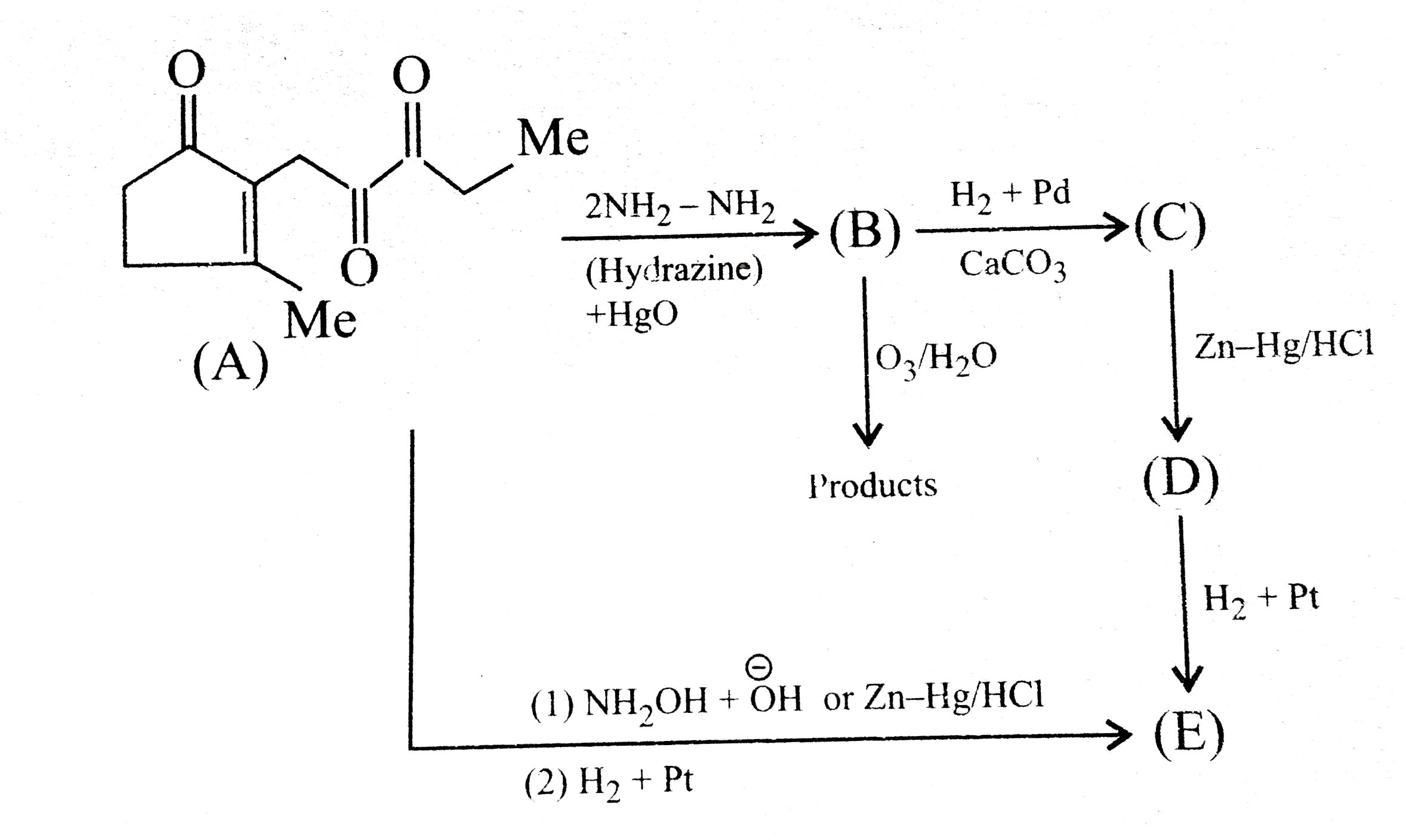
The structure of product (B) is:02:49View SolutionIn the following sequence of reactions, products A to D are formed:

The structure of product (C) is:02:34View SolutionIn the following sequence of reactions, products A to D are formed:

The structure of product (D) is:03:15View SolutionIn the following sequence of reactions, products B to E are formed:

The structure of product (E) is:04:04View SolutionIn the following sequence of reactions, products B to E are formed:

The structure of ozonalysed product P is02:41View Solution
Exercises (Linked Comprehension Type) questions and complete solutions for chapter ALKYNES of CENGAGE CHEMISTRY (ENGLISH) of Class 11
All Exercises from CENGAGE CHEMISTRY Class 11 CHEMISTRY ALKYNES
- Exercises (Archives - Analytical and Desriptive Type)
- Exercises (Archives - Fill in the Blanks Type)
- Exercises (Archives - Single Correct Answer Type)
- Exercises (Linked Comprehension Type)
- Exercises (Multiple Correct Answers Type)
- Exercises (Single Correct Answers Type)
- Exercises (Subjective Type)
- Illustrations
- Solved Examples
